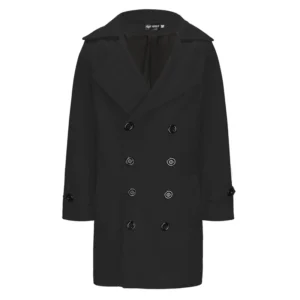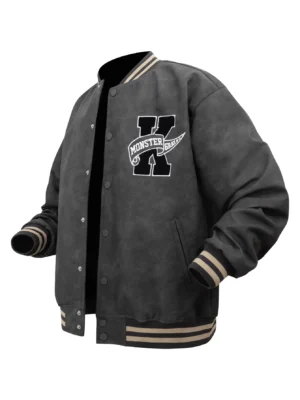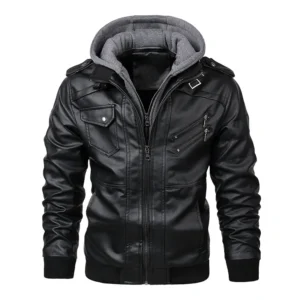Introduction to the Ethical Comparison
In today’s fashion world, consumers are increasingly concerned about the ethics behind their clothing choices. Questions about material sourcing, animal welfare, and environmental impact have become central to purchasing decisions, particularly when it comes to luxury items like outerwear. Among these considerations, one question frequently arises: Is shearling more ethical than fur?
Shearling is a material made from sheepskin with the wool still attached, processed so both the hide and wool are preserved together. Traditional fur, on the other hand, refers to the dressed pelts of animals like mink, fox, and rabbit, used primarily for their fur rather than as a food source. While both materials originate from animals, their production methods, associated welfare concerns, and environmental impacts differ significantly.
Ethical considerations surrounding these materials are multifaceted and complex. They encompass animal welfare, environmental sustainability, manufacturing practices, and even cultural contexts. Understanding the differences between shearling and sheepskin provides crucial context for making informed fashion choices that align with personal values.
What Is Shearling? Origin and Production Process
Shearling is a specific type of sheepskin where the wool remains attached to the hide during processing. It creates a material with leather on one side and wool on the other, providing both warmth and durability. Unlike other sheepskin products where the wool might be removed and processed separately, shearling maintains this natural connection between both components.
Most significantly, shearling is typically sourced as a byproduct of the meat industry. Sheep are raised primarily for food production, with their hides becoming available after slaughter. This distinction is important when considering the ethical implications, as the animals are not raised specifically for their pelts alone. According to industry estimates, over 90% of sheepskin used in fashion comes from food production systems.
The production process for shearling involves several steps:
– Cleaning and preserving the raw sheepskin after slaughter
– Tanning the hide side to create leather while preserving the wool
– Treating both sides with various chemicals to enhance durability
– Cutting and crafting the material into finished products
Shearling is commonly used in the fashion industry for jackets, coats, boots, gloves, and home furnishings. The natural insulation properties and durability make it particularly valuable for winter wear. Understanding whether sheepskin and shearling are the same helps clarify what you’re actually purchasing when buying these products.
What Is Fur? Types and Sourcing Methods
Fur in the fashion context refers to the dressed pelts of animals where the focus is primarily on the animal’s hair or fur rather than the underlying skin. Unlike shearling, traditional fur is typically sourced from animals that are raised or hunted specifically for their pelts, with the meat often being a secondary consideration or even a waste product.
There are two primary sourcing methods for fur in the fashion industry:
Fur farming: Animals are bred and raised in captivity specifically for their fur. This accounts for approximately 85% of the fur used in fashion globally, with mink, fox, and chinchilla being the most common species.
Wild trapping: Animals are caught in the wild using various trap types. This practice is more common in North America and Russia, with species like beaver, coyote, and lynx among those commonly trapped.
Common fur types used in fashion include:
– Mink – prized for its softness and warmth
– Fox – known for its fluffy texture and dramatic appearance
– Rabbit – more affordable and widely available
– Chinchilla – extremely soft but rare and expensive
– Sable – considered one of the most luxurious fur types
The fur production process involves trapping or slaughtering the animal, carefully removing the pelt, preserving it, and then crafting it into garments. Understanding the key differences between shearling and sheepskin can help clarify how these materials compare to traditional fur.
Animal Welfare: Shearling Industry Practices
The “byproduct argument” is central to ethical discussions about shearling. Since most sheepskin comes from animals already being raised for meat, proponents argue that using the hides prevents waste and maximizes the utility derived from each animal. However, critics point out that the economic value of shearling can still incentivize certain farming practices and that being a byproduct doesn’t automatically absolve all welfare concerns.
Standard sheep farming practices vary widely by country and operation type. In ideal scenarios, sheep are raised in pasture-based systems with adequate space, proper nutrition, veterinary care, and protection from predators and extreme weather. However, not all operations maintain these standards, and intensive farming methods can lead to overcrowding, restricted movement, and increased disease prevalence.
Some concerning practices in sheep farming include:
– Mulesing: A controversial practice used primarily in Australia to prevent flystrike by removing strips of skin around the tail
– Long-distance transport: Often stressful and potentially harmful to sheep
– Early separation of lambs from mothers in some intensive systems
– Tail docking and castration sometimes performed without pain relief
Slaughter methods are regulated in most developed countries, with requirements for pre-slaughter stunning to minimize suffering. However, enforcement and practices vary globally, with some regions having less stringent oversight. For those considering purchasing men’s sheepskin coats, understanding these welfare considerations is an important part of making an ethical choice.
Animal Welfare: Fur Industry Practices
Fur farming practices have been the subject of significant criticism from animal welfare organizations worldwide. On typical fur farms, animals like mink and fox are kept in wire mesh cages that provide minimal space – often just slightly larger than the animal’s body. These environments typically restrict natural behaviors such as swimming for mink or digging for foxes, leading to documented stress behaviors including pacing, self-mutilation, and aggression.
Common welfare concerns in fur farming include:
– Cage confinement with minimal environmental enrichment
– High rates of stereotypical behaviors indicating psychological distress
– Social stress from inappropriate grouping or isolation
– Physical injuries from wire flooring or aggression
– Disease spread due to proximity and stress-compromised immunity
Fur harvesting methods typically involve gassing, electrocution, or neck breaking to avoid damaging the pelt. While some certification programs like WelFur have established guidelines for these practices, animal welfare organizations argue these standards still permit significant suffering and fail to address the fundamental restrictions of cage environments.
Wild trapping presents its own set of welfare concerns. Commonly used traps, including leg-hold traps, body-gripping traps, and snares, can cause significant pain, injury, and distress. Animals may remain trapped for many hours or even days before trappers return, experiencing exposure, thirst, hunger, and terror. Non-target animals, including endangered species and pets, are sometimes caught accidentally.
The fundamental ethical difference between shearling and fur centers on purpose: animals raised specifically for fur exist primarily to be killed for their pelts, while shearling generally comes from animals raised for multiple purposes. Understanding shearling versus sheepskin for winter wear provides additional context for this comparison.
Environmental Impact: Shearling Production
The environmental footprint of shearling begins with sheep farming, which has several significant impacts. Sheep farming requires substantial land use, particularly for pasture-raised animals. While grazing can be integrated into sustainable land management, it can also contribute to land degradation and habitat loss when poorly managed. Additionally, sheep produce methane, a potent greenhouse gas, through their digestive processes.
Water usage is another environmental consideration. Sheep farming requires water for the animals, pasture irrigation in some regions, and cleaning. However, the most intensive water use occurs during the tanning and processing stages. Traditional tanning methods use significant amounts of water and can generate contaminated wastewater containing salts, acids, sulfides, and chromium compounds if not properly treated.
When considering the overall environmental impact, the “shared impact” concept is relevant. Since shearling is a byproduct of meat production, the environmental costs are effectively distributed across multiple products rather than attributed solely to the shearling. This potentially makes the per-product environmental footprint lower than materials produced for a single purpose.
The biodegradability of shearling depends heavily on the tanning and treatment processes. Minimally processed sheepskin can decompose relatively naturally, but many commercial tanning methods introduce chemicals that significantly slow this process and can leach into the environment. For environmentally conscious consumers looking for men’s shearling coats, the processing methods used can be an important consideration.
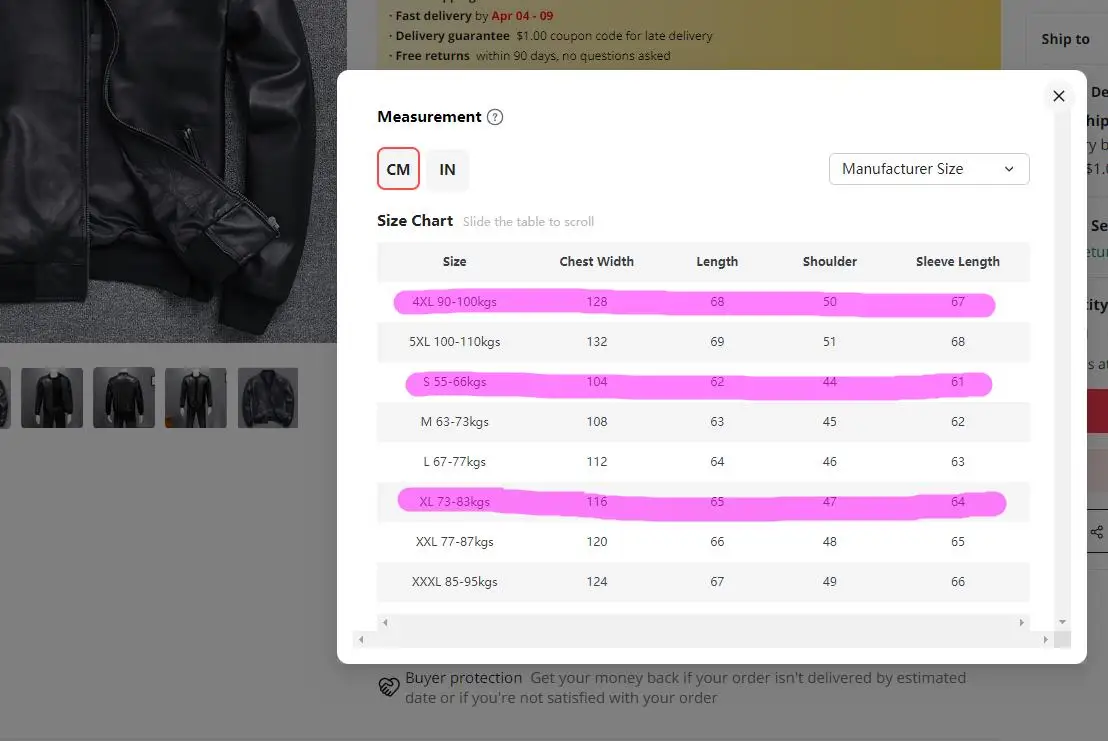
Environmental Impact: Fur Production
Fur farming creates several distinct environmental challenges. These operations concentrate large numbers of carnivorous animals in small areas, generating significant waste. The manure, urine, and unused feed create runoff that can contaminate local waterways with nitrogen and phosphorus, potentially causing algal blooms and water quality issues. A single mink farm with 3,000 animals can produce as much fecal waste as a community of 8,000 humans.
The feed requirements for fur-farmed animals represent another environmental concern. These carnivorous animals typically consume fish products, meat byproducts, and other protein-rich foods that have their own substantial environmental footprints. Some studies suggest that the feed required for fur-farmed animals could otherwise feed millions of people.
The fur dressing and dyeing process typically involves numerous chemicals, including formaldehyde, chromium salts, naphthalene, and various dyes and bleaching agents. Without proper treatment, these chemicals can pollute water systems. Additionally, some preservation chemicals used in fur processing may limit biodegradability and create end-of-life disposal challenges.
While fur industry advocates point to fur’s natural origins as an environmental benefit compared to synthetic alternatives, the intensive farming and chemical processing required undermine this claim. For consumers considering options like leather shearling coats, understanding these environmental differences provides important context for making ethical choices.
Sustainability and Certifications
When comparing sustainability profiles, both shearling and fur present mixed pictures. Shearling benefits from being a byproduct of the meat industry, potentially reducing waste, while its natural insulation properties and durability can lead to long-lasting products that need less frequent replacement. Fur also offers exceptional durability and insulation but comes with higher upfront environmental and ethical costs due to dedicated animal raising or trapping specifically for pelts.
Several certification systems exist to address ethical concerns in both industries:
| Certification | Material | Focus Areas | Limitations |
|---|---|---|---|
| Responsible Wool Standard (RWS) | Sheep/Shearling | Animal welfare, land management | Doesn’t cover all processing impacts |
| Leather Working Group (LWG) | Leather/Shearling | Environmental processing standards | Limited focus on animal welfare |
| WelFur | Fur | Farm animal welfare standards | Based on existing farm systems rather than ideal conditions |
| Origin Assured | Fur | Country-of-origin compliance | Relies on existing regulations that vary widely |
Both industries face challenges with transparency and traceability. Following materials from farm to finished product can be difficult, particularly when supply chains cross multiple countries with varying regulatory standards. For consumers seeking ethical options, these certification systems provide some guidance, though each has limitations in scope and verification methods.
For those interested in exploring the best options available, looking into stylish men’s shearling jackets can provide examples of products where sustainability and ethical concerns have been considered in design and production.
Mens Double Breasted Pea Coat, Mens Wool Blend Coat, Mens Wool Pea Coat
Price range: $136.84 through $157.36 Select options This product has multiple variants. The options may be chosen on the product pageMens Cashmere Overcoat, Mens Hooded Winter Coat, Mens Wool Blend Coat
Price range: $128.72 through $139.68 Select options This product has multiple variants. The options may be chosen on the product pageMens Black Overcoat, Mens Black Wool Coat, Mens Wool Overcoat
$339.18 Select options This product has multiple variants. The options may be chosen on the product pageMens Grey Overcoat, Mens Wool Blend Coat, Mens Wool Overcoat
$201.28 Select options This product has multiple variants. The options may be chosen on the product pageMens Leather Coat, Mens Long Leather Coat
Price range: $225.22 through $235.58 Select options This product has multiple variants. The options may be chosen on the product pageMens Black Leather Coat, Mens Leather Coat
Price range: $181.52 through $197.20 Select options This product has multiple variants. The options may be chosen on the product page
The Byproduct Argument: A Critical Assessment
The byproduct status of shearling is often presented as its strongest ethical advantage over fur, but this argument deserves deeper examination. While it’s true that sheep are primarily raised for meat with hides as a secondary product, the economic relationship is more complex than it first appears. The value added by shearling can significantly boost the profitability of sheep farming operations, creating a situation where the animals serve dual economic purposes rather than the hide being merely an afterthought.
Critics question whether this economic interdependence means that purchasing shearling truly avoids supporting animal slaughter, as consumers of shearling products are still creating demand within a system that relies on animal farming. However, proponents counter that utilizing all parts of an already-slaughtered animal shows greater respect for the animal’s life than allowing usable materials to go to waste.
From a utilitarian ethical perspective, systems that maximize utility from each animal raised may cause less overall harm than those requiring separate animals for food and clothing. However, from animal rights perspectives that question the fundamental use of animals for human purposes, both systems remain problematic regardless of efficiency.
For consumers who avoid meat but consider using animal byproducts, understanding where shearling fits within their ethical framework may require examining how their shearling purchase influences the broader economic system of animal agriculture. Alternative options like wool coats provide another consideration for those evaluating their personal ethical boundaries.
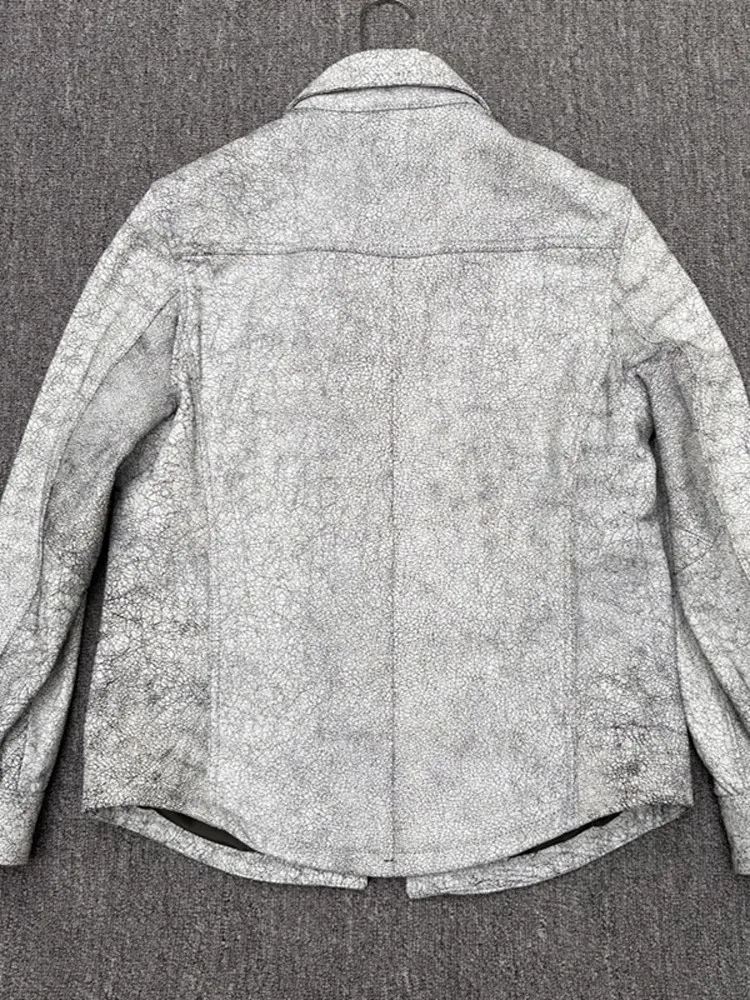
How To Identify Ethically Sourced Options
For consumers concerned about ethical sourcing, identifying better options requires attention to specific details:
When shopping for shearling or fur products, look for:
– Certification labels like RWS (Responsible Wool Standard) for shearling
– Country of origin (some countries have stricter welfare regulations)
– Transparency from brands about their supply chains
– Detailed information about animal husbandry practices
– Smaller-scale producers who can verify their sourcing
Questions to ask before purchasing:
– Where were the animals raised and under what conditions?
– How were they slaughtered?
– What tanning or processing methods were used?
– Does the company have an animal welfare policy?
– Are there certifications verifying ethical claims?
For those who remain concerned about either material, several alternatives exist, including high-quality synthetic shearling, recycled materials, and innovative plant-based textiles. For everyday contexts, shearling jackets for casual wear with ethical certifications can provide a middle-ground option for some consumers.
Is Shearling Truly More Ethical Than Fur?
Based on our comprehensive analysis, shearling generally presents fewer direct ethical concerns than fur when considering animal welfare. The byproduct status of shearling means animals are not raised exclusively for their pelts, reducing the number of animals impacted solely for fashion purposes. Additionally, sheep farming typically allows for more natural behaviors than the cage confinement common in fur farming.
However, it’s important to recognize that “more ethical” doesn’t equate to “without ethical concerns.” Shearling production still involves animal slaughter and raises welfare issues related to sheep farming practices, transportation, and slaughter methods. The environmental impact of processing, particularly traditional tanning methods, also presents significant concerns.
Ultimately, the ethical calculation depends on individual values and priorities. Those who place highest importance on minimizing animal suffering specifically for fashion might find shearling preferable, while those opposed to any use of animal products may reject both options. For consumers seeking long-term investment pieces, understanding the timeless appeal of quality shearling coats can help determine whether such products align with both personal style and ethical standards.
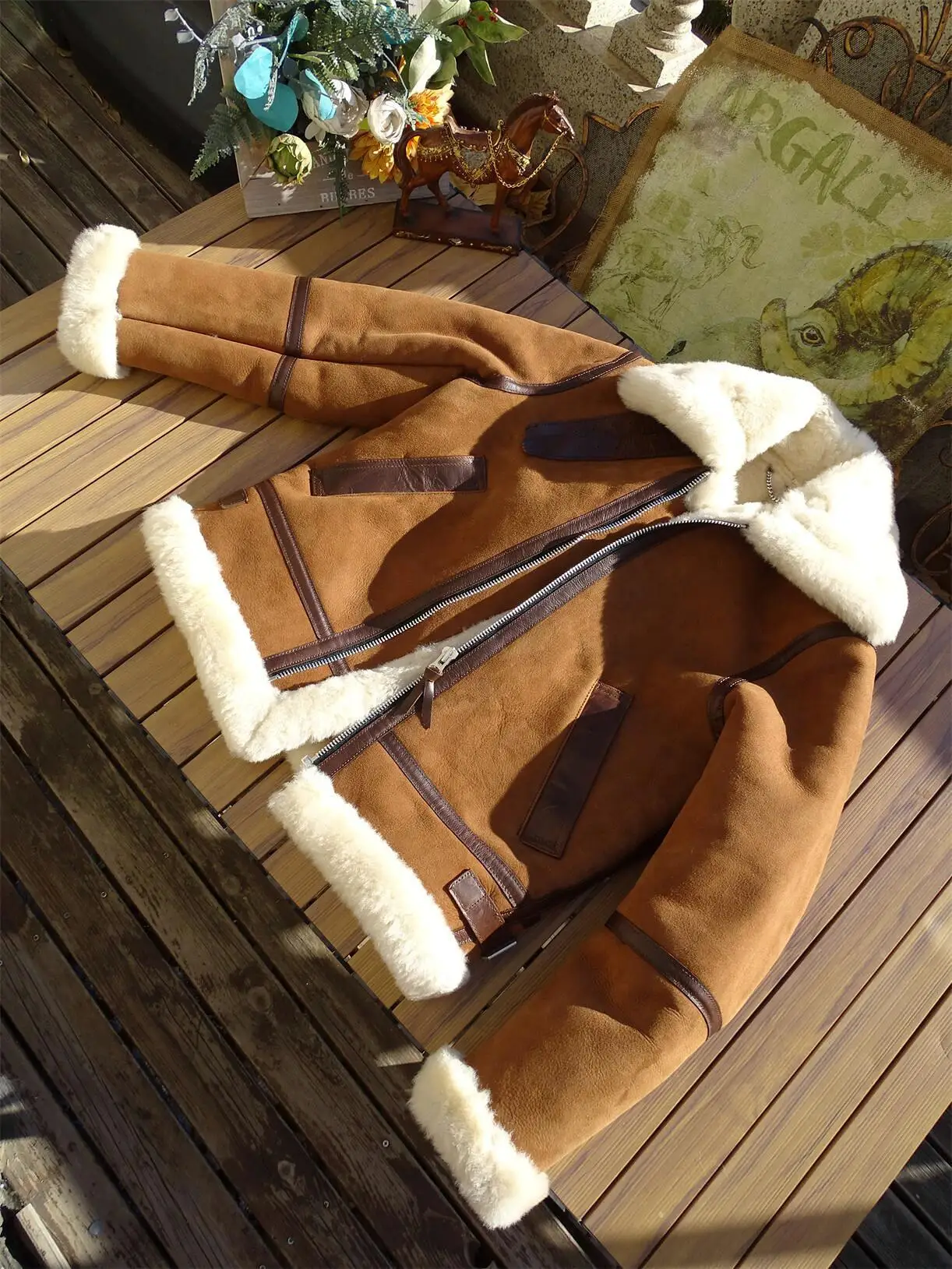
Frequently Asked Questions
Is vintage fur more ethical than new fur?
Vintage fur doesn’t create new demand for fur production, which many consider more ethical as it doesn’t directly support current fur farming or trapping. However, wearing any fur, vintage or new, may normalize fur fashion and indirectly encourage new production. This remains a personal decision based on individual ethics.
Are there certified ethical shearling options?
Yes, look for shearling products certified by organizations like the Responsible Wool Standard (RWS), which verifies animal welfare practices and land management in sheep farming. Some smaller producers also provide transparent information about their specific animal husbandry practices.
How long do shearling and fur products typically last?
Both materials are known for exceptional durability. With proper care, high-quality fur and shearling can last for decades – sometimes 20+ years. This longevity factor should be considered when evaluating the overall environmental impact of these materials compared to shorter-lived alternatives.
What are the best alternatives to fur and shearling?
Modern alternatives include high-quality faux fur and synthetic shearling made from recycled materials, which continue to improve in warmth and appearance. Some innovative plant-based materials are also emerging. For traditional styles with different materials, exploring leather coat options provides alternatives with their own ethical considerations.
How can I properly care for shearling to maximize its lifespan?
Proper care extends product life, making the initial environmental impact less significant over time. Store shearling away from direct sunlight, brush regularly to maintain the wool’s loft, spot clean when needed, and consult professional cleaners familiar with shearling for thorough cleaning. Avoid getting the material completely soaked, and never machine wash or dry clean without confirming the cleaner has experience with shearling.


